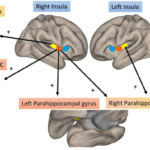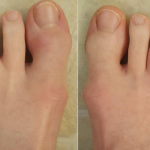The guideline notes that even with the availability of new therapies for PsA, “there remains limited comparative efficacy/effectiveness evidence to inform treatment decisions. Conditional recommendations convey that, although the suggested course of action will be best for many patients there will be some patients in whom, considering their comorbidities and/or their values and preferences, the alternative represents the best choice.”
The high percentage of conditional recommendations “highlights how far we need to go for data generation for PsA,” Dr. Ogdie says. “We have limited data about how to treat the disease. We have a lot of data about individual drugs and how they compare to placebo, but that is not how we use drugs in clinical practice. We need more head-to-head drug trials to help us understand the best treatment strategies for patients.”
Treat-to-Target Strategy
The guideline supports a treat-to-target strategy, although the recommendation is conditional due to low-quality evidence. Optimal disease management using a targeted approach can possibly avoid or delay irreversible joint damage, associated functional limitations, joint deformities and disability associated with PsA. The Voting Panel did not address specific targets to be recommended or used, but stated that a treatment target would likely use either minimal disease activity or disease activity in PsA.
A different target “may be chosen through patient-provider discussion,” according to the guideline. Not using treat-to-target can be considered in patients when concerns about the higher frequency and/or severity of adverse events, higher cost of therapy or higher patient burden of medication with tighter control exist, according to the guideline.
Highlighted Recommendations
In addition to the recommendation about first-line use of a TNFi in patients with relatively active disease, several other recommendations are highlighted:
- Patients with active PsA despite treatment with an OSM should switch to a TNFi biologic over a different OSM;
- An OSM may be chosen over a TNFi biologic if the patient has mild to moderate disease, has a preference for oral over parenteral therapy or has concerns about the adverse effects of a biologic;
- A TNFi biologic would not be a good choice for those with congestive heart failure, previous serious or recurrent infections or demyelinating disease; and
- For patients who have active PsA and concomitant IBD despite treatment with an OSM:
- Switch to a monoclonal antibody TNFi biologic over a TNFi biologic soluble receptor biologic, which is ineffective for IBD;
- Switch to a TNFi monoclonal antibody biologic over an IL-17i biologic, which is ineffective for IBD; and
- Switch to an IL-12/23i biologic over switching to an IL-17i biologic.
Nonpharmacologic Interventions
The guideline makes several recommendations for nonpharmacologic interventions. One strong recommendation supported by moderate-quality evidence is for smoking avoidance/cessation. This recommendation was based on evidence linking smoking to a reduced efficacy of biologics, the recognized benefits of smoking cessation and the well-established links of smoking with mortality, cancers, and heart and lung diseases in the general population.

